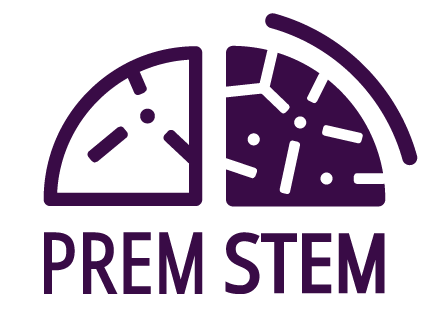about premstem
project summary
overview
The brain injury in the premature born infant: stem cell regeneration research network, PREMSTEM, is a collective of world leading clinicians, researchers, stakeholder advocacy groups and an industrial partner with well-established experience in neonatology and drug development.
PREMSTEM is focused on delivering to the clinic a novel regenerative therapy to reduce the enormous emotional, health and economic implications of neurodevelopmental injury caused by encephalopathy of prematurity (EoP) – brain damage associated with premature birth (i.e. before 37 of 40 weeks of gestation).
Advances in perinatal medicine, especially in respiratory support mean that even the sickest and smallest babies with EoP often survive, but there are currently no treatments to repair the brain damage of EoP.
mission
We aim to validate umbilical cord derived human mesenchymal stem cells (H-MSCs) as a regenerative therapy for EoP to improve the quality of life for preterm infants and reduce the societal costs of their special needs.
Background to the research
Preterm infants are an understudied but large patient group. In the European Union alone, 400,000 babies are born preterm each year. In a high healthcare setting, greater than 50% of babies who survive being born before 28 weeks (‘extremely preterm’), and about 30% of babies born between 28 and 32 weeks (‘very preterm’) will have lifelong disability, including cerebral palsy, severely impaired cognitive functions, and neurodevelopmental disorders such as attention deficit and hyperactivity disorder (ADHD) and autism spectrum disorder (ASD).
Even babies born close to a normal gestational length (between 32 and 37 weeks, ‘late preterm’) are at increased risk of neonatal mortality and morbidity, including increased rates of cerebral palsy, lower cognitive performance on standardised IQ exams and increased rates of neurodevelopmental disorders.
The damaging effects of preterm birth on the brain, manifested as EoP, carry significant economic costs, and can have negative impacts on families and communities. As diagnosis of EoP can often only be definitively made days or weeks after birth, the most important strategy for treatment will necessarily be one that promotes neuroregeneration of the damaged brain.
‘extremely preterm’
Born before
28 weeks
‘very preterm’
Born between
28 and 32 weeks
‘late preterm’
Born between
32 and 37 weeks
Research objectives
In clinical medicine, neonates are an often neglected and understudied population; they are medically complex and there exists a certain reluctance to consider novel interventions. PREMSTEM hopes to push forward the research agenda for neonatal innovation by bringing together a committed interdisciplinary partnership to provide a road-map for how medicines can be optimised for use in this understudied patient group.
Research methodology
Substantial clinical evidence supports that H-MSCs are safe for use in babies and children, being applied in a number of studies focused on brain injury specific in type to the term born infant and in children with established neurological disorders. Also, pre-clinical data clearly demonstrates that MSCs are robustly regenerative in several types of neurological injuries, most importantly, including in models of perinatal brain injury. However, these studies are typically small (one model, one treatment paradigm).
PREMSTEM harnesses research excellence in the field of perinatal medicine to extensively test the regenerative abilities of various doses, timings and routes of administration of umbilical cord derived H-MSCs in both small and large animal models of EoP. In addition, PREMSTEM will characterise the mechanisms of H-MSCs neuroregeneration across eleven in vitro models of EoP and develop new, inexpensive, and easy to use imaging modalities that will give clinicians for the first time the ability to readily identify babies with EoP.
We aim to progress H-MSCs for EoP through early and late stage preclinical research while preparing the regulatory approvals for Phase I and II clinical trials at the end of the project.
Outcomes and future possibilities
PREMSTEM aims to provide a fully validated, clinically ready therapeutic platform for the regenerative treatment of EoP using H-MSCs and novel imaging tools to enable clinicians to be able to identify and stratify patients with EoP.
We also envision that within five years, applications for our H-MSCs therapy will extend to other types of perinatal brain injury (e.g. birth asphyxia in term born infants), and to disorders such as paediatric multiple sclerosis that share pathophysiological processes (e.g. inflammation and demyelination) with EoP.

